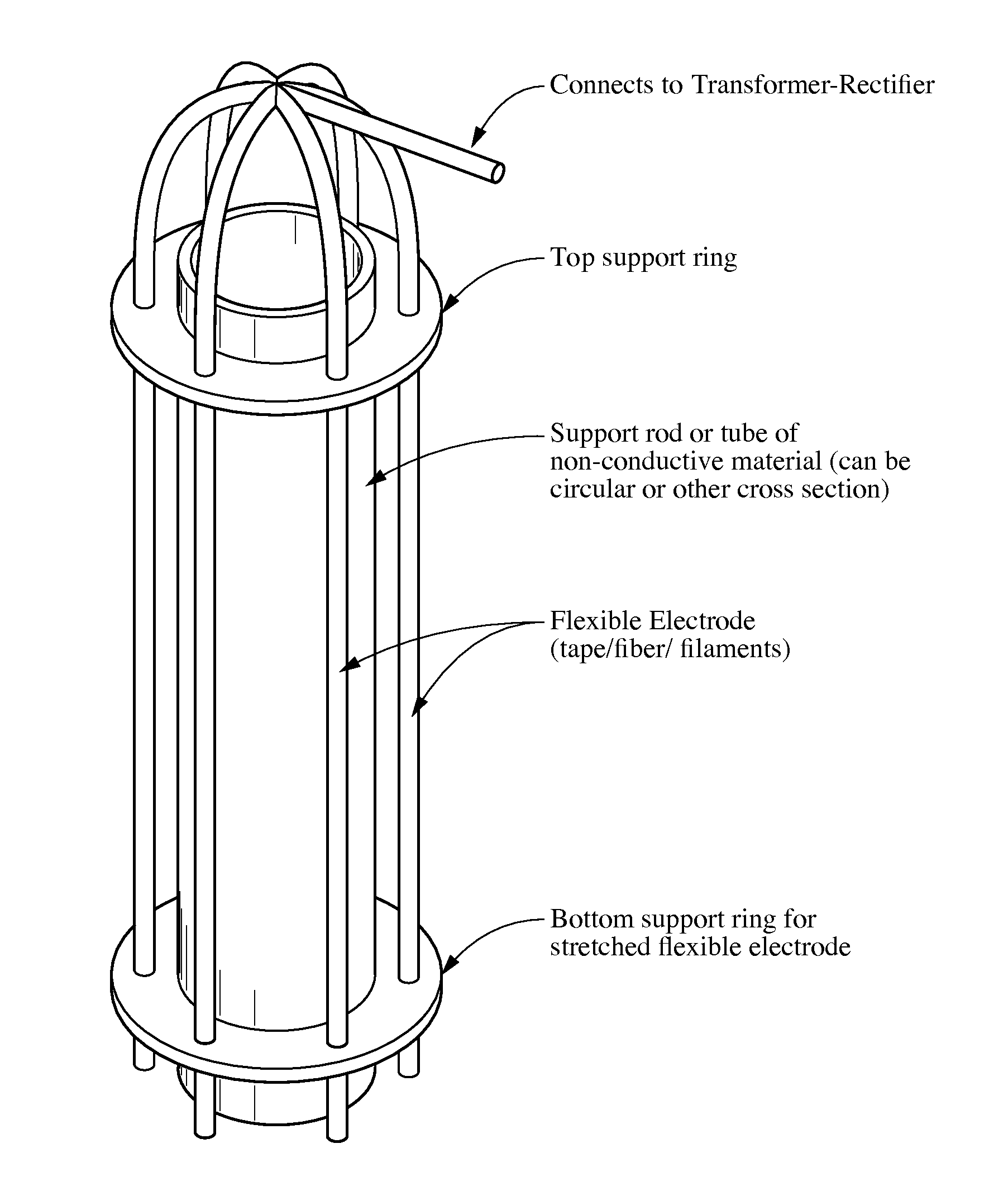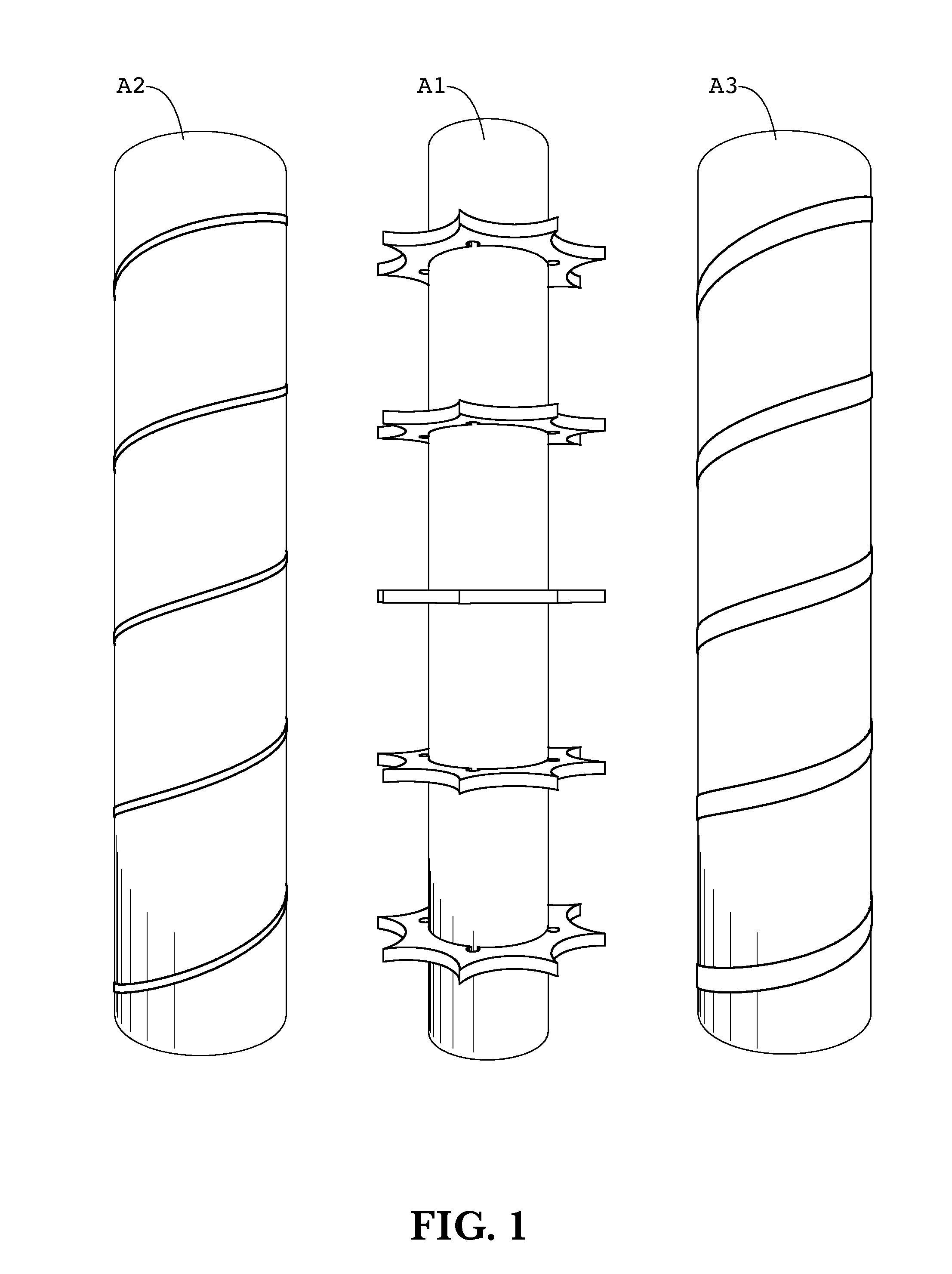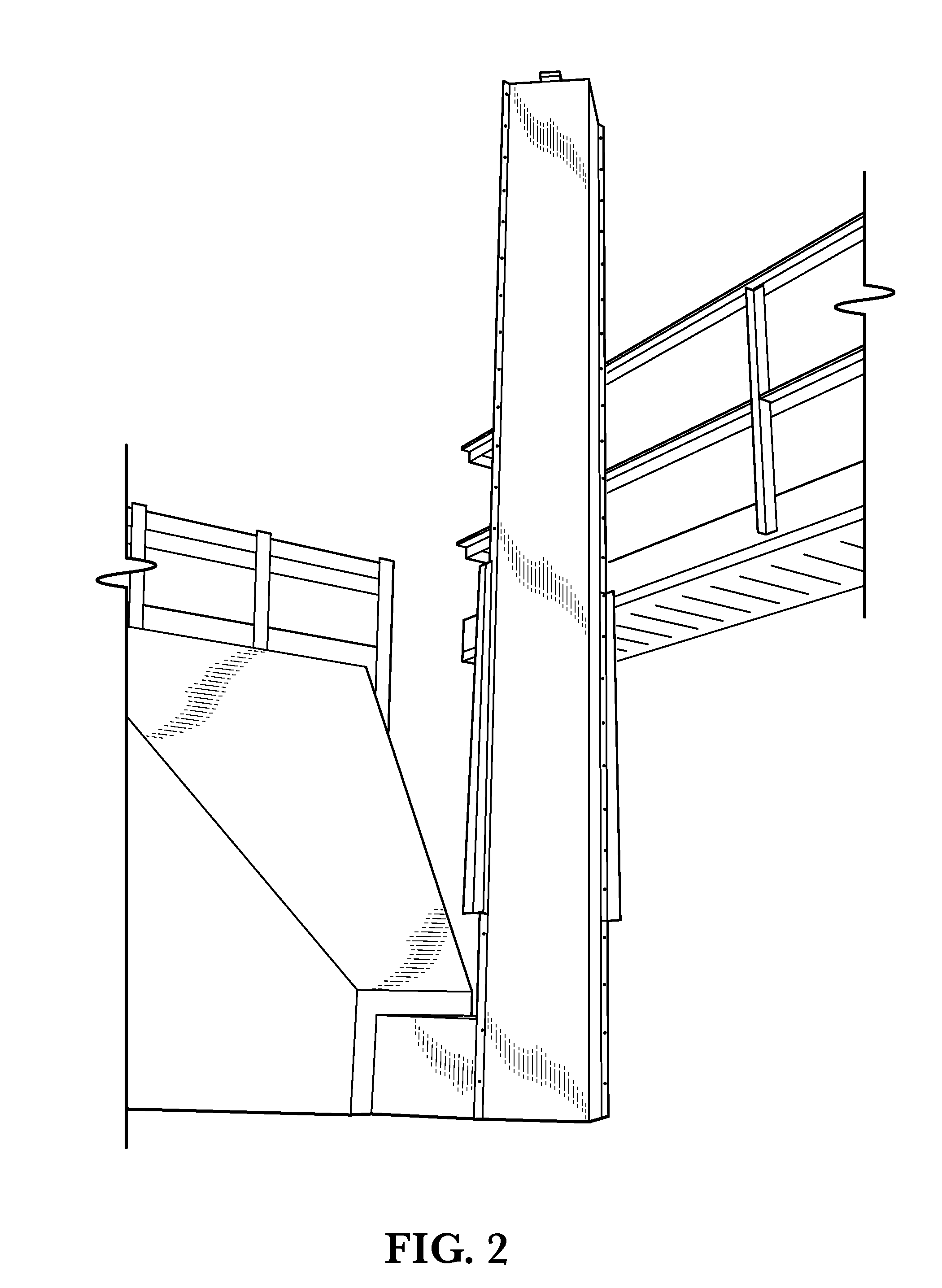Carbon fiber composite discharge electrode
a discharge electrode and carbon fiber technology, applied in electrostatic separation, solid separation, chemical apparatus and processes, etc., can solve the problems of not conducting electricity, requiring strong support structures, and expensive and heavy electrodes, and achieves low cost, high strength, and reduced weight of electrodes.
- Summary
- Abstract
- Description
- Claims
- Application Information
AI Technical Summary
Benefits of technology
Problems solved by technology
Method used
Image
Examples
Embodiment Construction
[0035]U.S. Provisional Application No. 61 / 224,121 filed Jul. 9, 2009 is incorporated in this application by reference.
[0036]The invention is directed to discharge electrodes made of a combination of one or more of the following components: electrically non-conductive fibers and conductive, non-metallic fibers such as carbon fibers, carbon nanofibers and polymer. Carbon fibers and / or carbon nanofibers (CNFs) are common components in all the electrodes contemplated.
[0037]The fiber and / or composite electrodes can be supported by a support rod, such as by wrapping the conductive filaments around or along the rod, or the fibers can be wound around two substantially parallel, spaced support rods that apply tension to the filaments. In the latter case, the conducting filaments are wound around both supports, producing an array of filaments extending between the rods. In a preferred embodiment, the span extends across a path through which gases flow. In some cases in which nanofibers are in...
PUM
| Property | Measurement | Unit |
|---|---|---|
| diameter | aaaaa | aaaaa |
| diameter | aaaaa | aaaaa |
| lengths | aaaaa | aaaaa |
Abstract
Description
Claims
Application Information
 Login to View More
Login to View More - R&D
- Intellectual Property
- Life Sciences
- Materials
- Tech Scout
- Unparalleled Data Quality
- Higher Quality Content
- 60% Fewer Hallucinations
Browse by: Latest US Patents, China's latest patents, Technical Efficacy Thesaurus, Application Domain, Technology Topic, Popular Technical Reports.
© 2025 PatSnap. All rights reserved.Legal|Privacy policy|Modern Slavery Act Transparency Statement|Sitemap|About US| Contact US: help@patsnap.com



